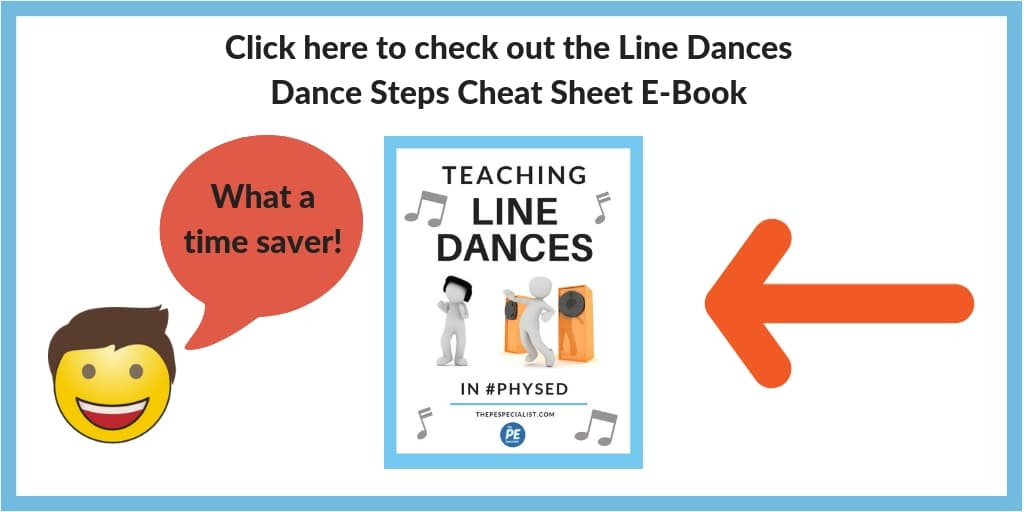Hey PE Teachers!
Looking for a fun and engaging way to get your younger students moving and learning fundamental skills? Let me introduce you to a classic that’s always a hit: The Chicken Dance! In the video below, you can see how I introduce the Chicken Dance to my students, and trust me, it’s always a blast. This dance is perfect for students in Kindergarten through 2nd grade. (If you need something for older students, you might want to check out The Jump Dance).
Before you get started, here’s what you’ll need to ensure a smooth and fun Chicken Dance session:
- Clear Boundaries: Define the space where students can move safely and freely during the dance. Make sure they have enough room to spread out.
Once you have these basics covered, you’re all set to bring the joy of the Chicken Dance to your PE class!
Watch how I teach the Chicken Dance to my young students:
*Curious about the wireless mic I’m using in the video? You can learn more in this post about my wireless mic system.
As you can see, the Chicken Dance is also a fantastic way to reinforce directional skills such as moving forward, sideways, and backward. 🙂
I usually kick off the lesson by playing a short sound clip of the Chicken Dance music. This little preview gets the kids excited and sets the stage for the fun to come. The Chicken Dance is based on a simple 4-count rhythm. Each step takes four counts, and there are—you guessed it—4 distinct steps, which you repeat four times in total.
So, remember the magic number for this dance… FOUR!
Breaking Down the Chicken Dance Steps
The Chicken Dance is wonderfully simple, combining non-locomotor and locomotor movements.
Non-Locomotor Steps (Staying in Place):
- Beaks: Mimic a chicken beak by opening and closing your hands in front of your mouth four times.
- Wings: Flap your elbows like chicken wings, four times.
- Tail Feathers: Wiggle your hips and tail feathers (your behind!) four times.
- Claps: Clap your hands four times.
Locomotor Steps (Moving Around):
- Skip: Skip around the designated space.
- Slide: Slide sideways in the space.
- Gallop: Gallop around the space.
Feel free to switch up the locomotor movements to keep things fresh and cater to your students’ abilities!
I always start by teaching the non-locomotor steps first. I count to four with each step to help the kids get the rhythm. Then, I explain that we’ll have “Movement Breaks” between each round of the Chicken Dance to practice locomotor skills.
During these movement breaks, I’ll give a signal to freeze and get ready for the next dance round, usually by shouting “BEAKS UP!” This cue signals it’s time to get back into the Chicken Dance.
Here’s the basic structure we follow:
- 4 rounds of the Chicken Dance (Non-Locomotor Steps)
- Skip around the open space (Locomotor Step 1)
- 4 rounds of the Chicken Dance (Non-Locomotor Steps)
- Slide in the open space (Locomotor Step 2)
- 4 rounds of the Chicken Dance (Non-Locomotor Steps)
- Gallop in the open space (Locomotor Step 3)
- 4 rounds of the Chicken Dance (Non-Locomotor Steps)
Adding Variations:
- Locomotor Variety: Use different locomotor movements like hopping, jumping, or leaping instead of skipping, sliding, and galloping.
- Partner Up for Fun: Incorporate partner work during the movement breaks. You could even introduce simple square dancing steps with partners for older students in this age group.
View this post on Instagram
- Skill-Based Routines: Integrate other PE skills! Have students dribble a basketball, toss ribbons, or use scarves during the movement breaks to connect the dance to other curriculum areas.
More Fun Movement Resources for K-2nd Grade
Looking for more engaging activities beyond the Chicken Dance? Here are a few more resources perfect for your younger students:
The “Call it Macaroni” Song
“Call it Macaroni” is another fantastic song for teaching locomotor and non-locomotor skills through a fun follow-the-leader style activity. Check out a video example below:
*Digital version of the song or CD available for purchase here
Hokey Pokey Hula Hoop Remix
Spice up the classic Hokey Pokey with hula hoops! This variation, which I shared back in 2016, is a great way to combine dance with HULA HOOP TRICKS if you already have hoops out. It’s also excellent for reinforcing right and left body awareness, which is crucial for young learners.
Locomotor License Test
As a fun way to assess locomotor skills at the end of 1st grade, we use the “Locomotor License Test.” It transforms assessment into an exciting challenge that rewards students for their hard work. You can download the free lesson plan and Locomotor License Cards HERE. There’s also a video overview available if you want to see it in action:

